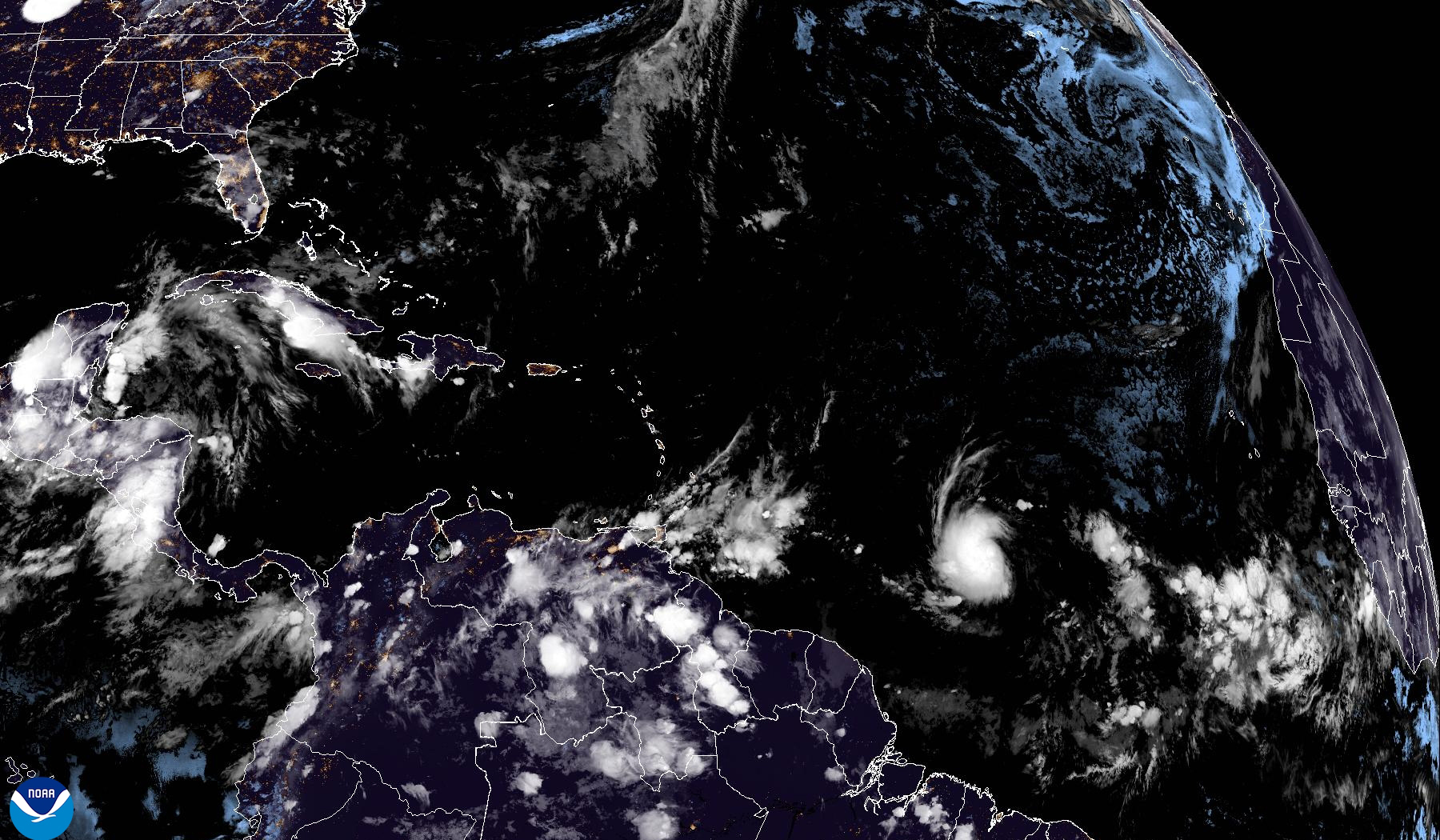Current Status of Hurricane Beryl: National Hurricane Center Beryl

National hurricane center beryl – Hurricane Beryl, a Category 1 hurricane, is currently located approximately 485 miles east-southeast of the Leeward Islands. The storm is moving west-northwest at 16 mph with maximum sustained winds of 85 mph.
National Hurricane Center Beryl deh ova de Atlantic Ocean and e dey move towards de Caribbean Sea. De storm get potential to strengthen into a hurricane and e fit affect Puerto Rico and other islands in de region. De National Hurricane Center dey monitor de storm closely and go provide updates as e dey develop.
Hurricane Beryl is expected to strengthen into a Category 2 hurricane by tonight and could reach Category 3 strength by early Tuesday. The storm is forecast to pass near or over the Leeward Islands on Tuesday night and Wednesday, bringing heavy rain, strong winds, and possible flooding.
National Hurricane Center Beryl is a tropical cyclone that formed in the Atlantic Ocean. It is the second named storm of the 2023 Atlantic hurricane season. Beryl is expected to strengthen into a hurricane as it moves towards the Lesser Antilles.
National Hurricane Center Beryl is expected to bring heavy rain and strong winds to the region. Residents in the path of the storm are urged to take precautions and stay informed about the latest forecasts.
Potential Impact Areas
The following areas are under a hurricane watch:
- Antigua and Barbuda
- Montserrat
- St. Kitts and Nevis
- Saba and St. Eustatius
- St. Maarten
- Anguilla
- British Virgin Islands
- U.S. Virgin Islands
- Puerto Rico
Storm Surge
Hurricane Beryl is expected to produce a storm surge of 3 to 5 feet above normal tide levels along the coasts of the Leeward Islands.
Rainfall
The storm is expected to produce heavy rainfall, with amounts of 4 to 8 inches possible in the Leeward Islands.
Historical Impacts of Hurricanes in the Region
The area where Hurricane Beryl is projected to make landfall has experienced numerous significant hurricanes throughout history. These storms have caused extensive damage, loss of life, and economic disruption.
Hurricane Matthew (2016)
Hurricane Matthew was a Category 5 hurricane that made landfall in Haiti and the southeastern United States in October 2016. The storm caused widespread flooding, wind damage, and power outages. In Haiti, Matthew killed more than 500 people and caused billions of dollars in damage. In the United States, Matthew killed at least 49 people and caused an estimated $10 billion in damage.
Hurricane Irma (2017)
Hurricane Irma was a Category 5 hurricane that made landfall in the Caribbean and Florida in September 2017. The storm caused widespread damage and flooding, particularly in the Florida Keys. Irma killed at least 134 people and caused an estimated $65 billion in damage.
Hurricane Michael (2018)
Hurricane Michael was a Category 5 hurricane that made landfall in the Florida Panhandle in October 2018. The storm caused widespread destruction, particularly in Mexico Beach and Panama City. Michael killed at least 59 people and caused an estimated $25 billion in damage.
Trends and Patterns
The frequency and intensity of hurricanes in the region have increased in recent decades. This trend is likely due to climate change, which is causing ocean temperatures to rise and atmospheric conditions to become more favorable for hurricane formation.
The increase in hurricane activity has had a significant impact on the region. Hurricanes can cause widespread damage and disruption, and they can also lead to loss of life. It is important to be aware of the risks associated with hurricanes and to take steps to prepare for these storms.
Preparations and Safety Measures

As Hurricane Beryl approaches, local authorities and residents are taking proactive steps to ensure safety and minimize the impact of the storm. These measures include:
Evacuation Plans, National hurricane center beryl
In areas under hurricane warnings, residents are strongly advised to evacuate to designated shelters or higher ground. Evacuation routes and assembly points should be identified and communicated in advance.
Shelter Locations
Emergency shelters are established in safe areas to provide refuge for evacuees. These shelters typically offer food, water, and medical assistance. Residents should familiarize themselves with the location of the nearest shelter and make arrangements for transportation if necessary.
Essential Supplies
In preparation for power outages and potential disruptions to essential services, residents should gather emergency supplies, including:
- Non-perishable food and water for at least three days
- First aid kit and essential medications
- Battery-powered radio and flashlights
- Important documents (passports, insurance policies) in a waterproof container
- Cash and credit cards
Staying Informed
It is crucial to stay informed about the latest weather updates and official advisories. Local news stations, government websites, and social media platforms should be monitored for accurate and timely information.
Following Official Advice
Residents should strictly adhere to instructions and advisories issued by local authorities. This includes evacuation orders, road closures, and other safety measures. By following official guidance, individuals can help protect themselves and their communities from the potential hazards of Hurricane Beryl.